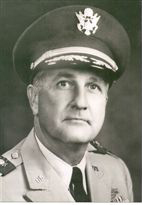Hey Firn,
Esp. "leadership, troop quality" - Stavelot was the second time 1 SS Pz had run into 1/117. The first was at St.-Bart near Mortain in Aug 1944. There, the Panzers and their Grenadiers were also stacked up, but it was a close call. See
here and
here.
As to "overall supporting resources", those were also present at Stavelot - perhaps more good circumstance (luck) than exact operational planning. 1/117 (organically, 3 rifle coys, a heavy weapons coy - MGs & 81mm mortars, an HHC with a pioneer platoon and an AT platoon) had an attached AT Coy (towed) since Aug 1944 (with them at Mortain). That coy had been pulled back to its Bn (along with its other coys) for refitting and retraining with M-10 SPs. It just got back with 1/117 in time for the Stavelot infiltration.
In addition, 1/117 had attached combat engineers (also with them at Mortain), who eventually managed to blow the Stavelot bridge. Further close support were the 117th's regimental mortars and arty. They happened to be plunked down in close proximity to Stavelot - good logistics or luck.
Thus, the US force at Stavelot was de facto a "combined arms task force" - even though not formally designated as such. I've never claimed, BTW, that infantry alone is superior to armor:
The Germans did not co-ordinate their panzers and grenadiers. There were good reasons for that (as you've pointed to in the SS 501 articles). Of course, even if they had and eventually wiped out 1/117 and its attached units, that would have taken too long. The Germans were FUBAR because of the "M" and last "T" in METT-T (again as you pointed out).
Regards
Mike









Bookmarks